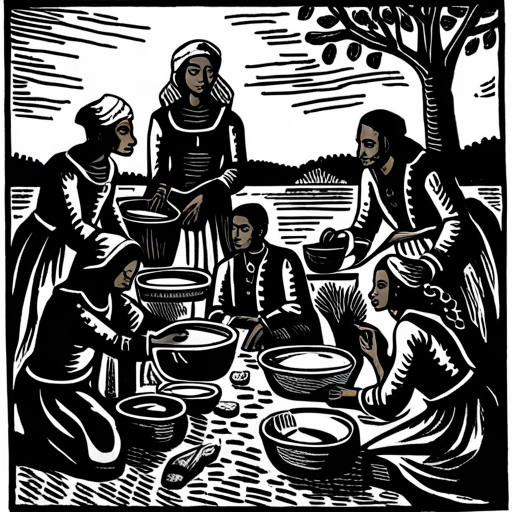Noddle’s Island’s ways
Still spill upon East Boston
A legacy not forgot
If someone rents an enslaved person, is that person also an enslaver? If we could count those who rented from others the labor of the enslaved in colonial and the early republic days, the sum would likely add up to a larger percentage of Northern households than often thought.
For example, on Noddle’s Island (East Boston of today) in Boston Harbor, a number of Africans were lent out along with the island itself, and all its buildings, in the late fall of 1703.
We know this because the property owner at the time, Elizabeth (Shrimpton) Stoddard, the widow of Samuel Shrimpton, petitioned the Massachusestts Bay government for more than two year’s back rent at two hundred pounds per year. The rent included the enslaved people on the island. The tenant? Her brother Nicholas Roberts and his associate.
“That ye Petitioner [Elizabeth Shrimpton Stoddard] haveing let her dwelling houses, orchard, garden, meadowe, three water Mills, bakehouse, brew? House, malt house, warehouse and SEVERAL NEGROES [Emphasis added] &c at Notles Island to Messs? Nicho Roberts Ben Jackson of Boston Merchts for the tearme of seaven years at the rate of two hundred pounds pr anum to be paid quarterly as may appear ? Lease bearing date April the 18th : 1700” (Petition).
In colonial Philadephia, an unnamed thirty year old man was listed in the following classified advertisement of the Philadelphia newspaper, American Weekly Mercury, in the summer of 1736. He was to be rented or sold out of a home on the city’s Water Street.
“Whoever inclines to Hire or Purchase a lusty strong Negro Smith, about 30 Years of Age, who has been bred up to all sorts of Ship or Country black Work, may be furnished on reasonable Terms […]. The said Negro is now at Work with a Blacksmith who can give a just Character of his Capacity, &c.” (American).
Along with the young man, available for sale were “Ship Chandlery and Iron Mongery Ware,” dry goods, tradesmen’s tools, and “Plantation Utensils.” Whether he was rented out or simply sold is unknown to this writer.
Some other examples of people being rented out include the following:
“TO BE SOLD OR LET, by GEORGE SMITH in Arch-Street, in Philadephia, very cheap for ready Money, or on good Security; TWO Negro Men and one Negro Boy: The said Smith has also a very good Negro Carpenter, to hire on reasonable Terms” (Advertisement, Pennsylvania).
The young Boston women referred to in the following advertisement were skilled in needlework, of great importance in a time when clothing was extremely expensive. Case in point, the charge for their year’s labor was increased by fifty percent if the renter did not provide the pair’s clothing. The clothing the two constructed was valued a full half of their labor by their owner.
“Two Negro Women to be hired out, one about 24 Years of Age, and the other 22. They can do all sorts of Household Work, and handle their Needles very well. The price is Thirty Pounds a Year, if cloathed by their Master, and Twenty if cloathed by them that hire them. Enquire of the Printer” (Advertisement, Boston Evening).
When there was a labor shortage, sometimes an advertisement such as the following was placed.
“If any Person has a Negro Man to Lett; or if a white Man is minded to hire himself for Twelve Months, may hear of a Place by Enquiring of the Printer (Advertisement, Boston News).
I would suggest that most owners who wanted to rent out their enslaved people did not resort to buying a newspaper advertisement, especially in small towns. Informal arrangements were the norm for most sales, whether for dry goods, tools, or labor, as seen in countless ledgers of the times or unseen in a long forgotten handshake. Slavery was the thread from which the whole cloth of the North was woven, whether bought or let.
Susan Elliott
Independent Researcher
Website: EnslavedNewEngland.org
Facebook: Hosea of Franklin, Massachusetts
SOURCES:
“Advertisement.” Boston Evening-Post (Boston, Massachusetts), no. 626, August 10, 1747: [4]. Readex: America’s Historical Newspapers. https://infoweb-newsbank-com.nehgs.idm.oclc.org/apps/readex/doc?p=EANX&docref=image/v2%3A1089C792E64CF650%40EANX-1089CB08B1F19D30%402359360-1089CB0935BE7028%403-1089CB0A520C4CE0%40Advertisement.
“Advertisement.” Boston News-Letter (Boston, Massachusetts), no. 2415, July 28, 1748: [2]. Readex: America’s Historical Newspapers. https://infoweb-newsbank-com.nehgs.idm.oclc.org/apps/readex/doc?p=EANX&docref=image/v2%3A1036CD221971FE08%40EANX-105667587571375F%402359713-10566758A7B2D017%401-1056675912865BDF%40Advertisement.
“Advertisement.” Pennsylvania Gazette (Philadelphia, Pennsylvania), no. 683, January 13, 1742: [3]. Readex: America’s Historical Newspapers. https://infoweb-newsbank-com.nehgs.idm.oclc.org/apps/readex/doc?p=EANX&docref=image/v2%3A10D34C656629FD30%40EANX-10D809F56841E880%402357325-10D809F59A5E8CA0%402-10D809F60CBCF898%40Advertisement.
American Weekly Mercury (Philadelphia, Pennsylvania), no. 868, August 19, 1736: [3]. Readex: America’s Historical Newspapers. https://infoweb-newsbank-com.nehgs.idm.oclc.org/apps/readex/doc?p=EANX&docref=image/v2%3A10380B67EBBF3BE8%40EANX-1062A252C3F17CB9%402355352-1062A252EDB77324%402.
Petition of Elizabeth Shrimpton, 1703, Massachusetts Anti-Slavery and Anti-Segregation Petitions; Massachusetts Archives Collection. v.40-Judicial, 1683-1724 (1660-1724).
SC1/series 45X. Massachusetts Archives. Boston, Mass. https://iiif.lib.harvard.edu/manifests/view/drs:50257694$1i
ILLUSTRATION:
DreamStudio AI generated by this writer with search terms, “black enslaved family on island in 1700s in New England in woodcut.”

Another wonderful piece, Susan. Samuel Shrimpton is an ALL-TIME New England villain, and I’ve wanted to write about him since before I wrote about the Dudleys.
I enjoyed the insight of how Elizabeth Shrimpton Stoddard sued, in part, for owed money for the leasing of her enslaved people. I don’t remember reading about this before. What’s more—and I know you know this—but colonial-era account books are full of payables/receivables for day-labor of enslaved people. For example, I’ve found records of enslavement in Abington in 1710, two years before it officially incorporated.
Keep up the good work!
Thanks for your comment, Wayne. The same goes for you. Keep up the good work!